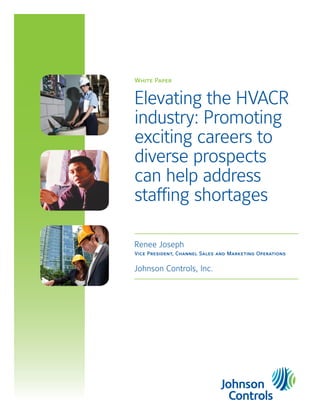This document discusses staffing shortages in the HVACR industry and strategies to address them. It notes that the industry faces a shortage of over 200,000 qualified employees due to factors like industry growth, an aging workforce, and lack of awareness about career opportunities. Recruiting more women and minorities could help solve this problem by diversifying the predominantly male workforce. The document advocates promoting the industry's attractive career paths and financial rewards through improved outreach and recruitment efforts targeting a range of prospective employees, especially students. Industry leaders acknowledge more progress is still needed on diversity but initiatives show signs of helping attract more women and minorities.











